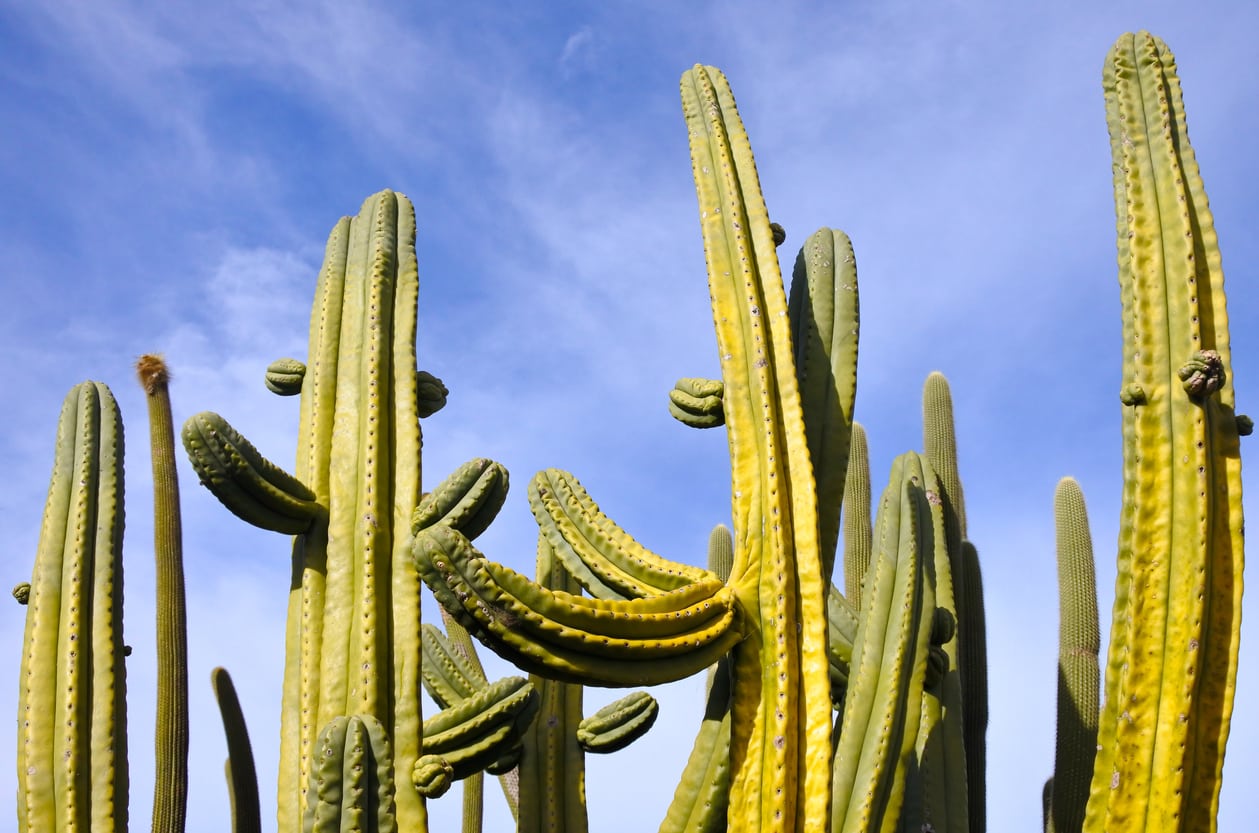What Is A Stenocereus Cactus – Learn About Stenocereus Plants


Of all the varieties of cactus, Stenocereus is one of the broadest in terms of form. What is a Stenocereus cactus? It is a genus of typically columnar cacti whose branches develop in very unique manners. Stenocereus cactus plants are usually quite large and considered outdoor specimens when used in the landscape.
What is a Stenocereus Cactus?
The world of cacti is a wondrous place filled with tiny to skyscraping plants in all shapes and colors. The many types of Stenocereus mostly fit the taller category, with vertical limbs that provide the main characteristic of the genera. Stenocereus cacti are native to the southwestern United States and northern parts of Mexico. One of the more impressive and commonly known plants in this family is the organ pipe cactus, which can grow up to 16 feet (4 m.) tall. Other Stenocereus are more shrub-like and barely knee high. A wide range of forms occurs in the genus but most have long limbs and branches. The name stems from the Greek word "stenos," which means narrow. The reference refers to the ribs and stems of the plants. Most Stenocereus cactus plants are ribbed and have pronounced spines and range from gray to greenish gray and green.
Types of Stenocereus
The organ pipe cactus may be the most known of the genera but there are many spectacular specimens. Stenocereus beneckei is a spineless form that has large creamy night blooming flowers. Stenocereus alamosensis is the octopus cactus, so named because of its numerous thick, long-spined stems that spring out almost horizontally from the base. The genus has plants with extremely fun and descriptive names such as:
- Creeping devil caterpillar cactus
- Dagger cactus
- Gray ghost organ pipe
- Candelabra
Such names give an insight into their various, wildly interesting forms. Most develop ribbed, long stems with almost sinuous beauty. After the rainy season, large brightly colored to white flowers are produced followed by spiny fruit.
Growing Stenocereus Cacti
Stenocereus cacti hail from arid regions. They prefer desert conditions and have a minimal tolerance to cold temperatures. The desert has a definite rainy season in which the cacti achieve most of their growth and store moisture in their limbs. The spines on most species help prevent excess evaporation and protect them from some pests. In the home landscape, they will need supplemental watering only in the hottest periods. Gritty, rocky or sandy soil provides the best environment for their roots. They do not need pruning and need minimal nutrition. In warm regions, they are drought tolerant and welcome plants with few needs, but a powerful presence in the landscape.
Sign up for the Gardening Know How newsletter today and receive a free copy of our e-book "How to Grow Delicious Tomatoes".

Bonnie Grant is a professional landscaper with a Certification in Urban Gardening. She has been gardening and writing for 15 years. A former professional chef, she has a passion for edible landscaping.